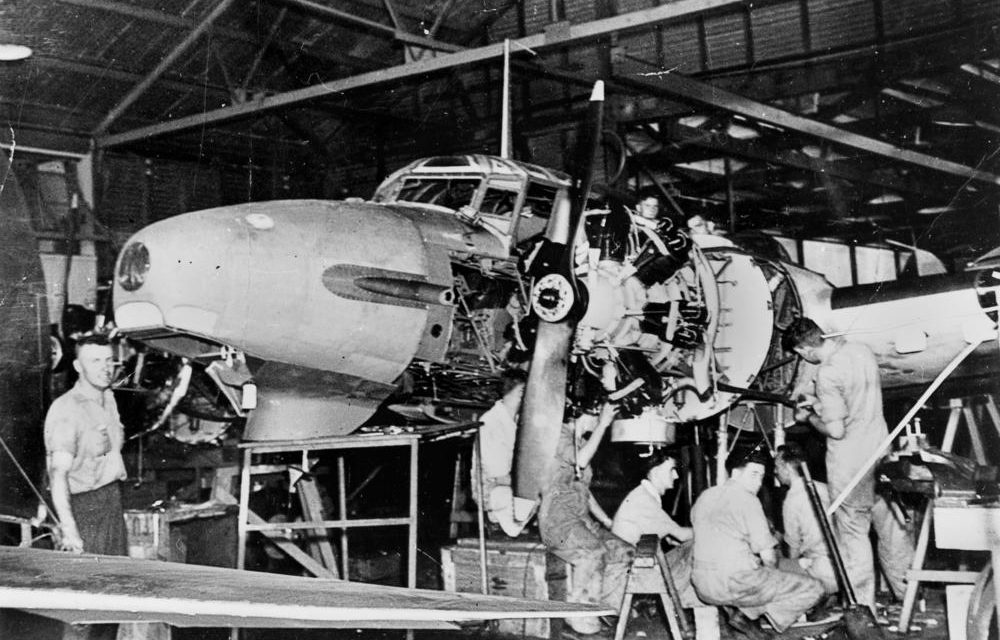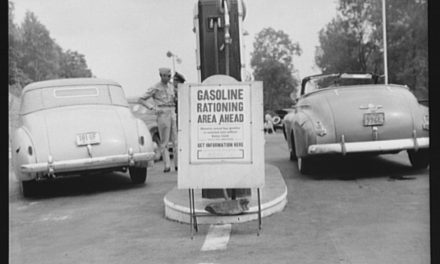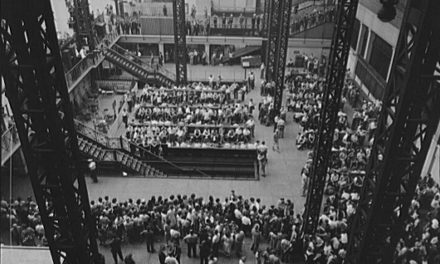The War Department announced this Thursday that they will be training over 100,000 individuals in civilian jobs over the next year. The training is targeted to those who do not qualify to serve overseas but still wish to aid in the war effort. It will prepare Americans to fill crucial noncombatant positions such as production workers, mechanics, and inspectors for government-owned factories, arsenals and depots.
Training for all areas is set to last 15 weeks to four months. Those in the areas of mechanics and inspecting will be paid while they are learning. Mechanics trainees can earn from $900 to $1,020 per year while in the program. Inspector training will pay $1,440 per year.

Aircraft mechanics working on an Avro Anson Mk1 plane in Archerfield, CA. From Wikimedia Commons.
To qualify for the training program, one must be outside the age range for selective service—that is, between 17 and 20 or older than 44. Otherwise, only those determined to be ineligible for the draft for some specific reason can enter the training program. The program also calls for a brief mechanical aptitude test which the War Department said will require almost no technical knowledge. The inspector training sector will demand a minimum of a high school education, with special preference to those who have at least one year of college education.
Specific details regarding what the mechanic and inspector training programs will entail are still to be determined.
Howard O. Hunter, Commissioner of the Work Projects Administration (WPA), briefly announced a plan to use idle machine welding and sheet metal shops for trainees in the work production sector. Under this auxiliary shop program, WPA administrators can cooperate with school authorities by leasing them the idle shops needed for the training programs.
The war department encouraged those interested to fill out an application at their nearest local United States Service Commission office.
Supervision of the program will be under William H. Kushnick, director of Civilian Training of the War Department.
The announcement comes at a time when factory and war labor on the home front is booming. Brehon Somervell, General of U.S. Services of Supply, stated that “American labor is the best in the world and American factories are the most efficient in the world.” According to the National Industrial Conference Board, the average pay for factory and plant workers has tripled since the Great War. The average civilian laborer earns $37.59 per week, far exceeding the $12.68 figure from the first war.
The boom in factory production and home front labor has instigated a refinement in training programs throughout the nation. Private production companies such as Westinghouse Electric and Manufacturing Co. in Monroeville, Penn., recently announced a plan to train 4,000 civilians for the manufacture of war materials with expanded apprentice courses and special training classes.
The state of New York has also released multiple new courses and programs for the war industry, increasing their enrollment to nearly 3,000 additional trainees from the last month. A total of 127 New York communities now offer training toward the war effort.
Sources:
“War department will train 100,000 for civilian jobs.” (1942, Mar 28). The Pittsburgh Courier. Retrieved from http://search.proquest.com.ezproxy.shu.edu/docview/202116233?accountid=13793
“Westinghouse training 4,000 for war production work.” (1942, Apr 03). Wall Street Journal. Retrieved from http://search.proquest.com.ezproxy.shu.edu/docview/131396477?accountid=13793
“State Expands War Job Training.” New York Times. Mar 30 1942: 19.
M. L. Kline. “Civilian defense: Minneapolis style.” Minnesota Municipalities, 27 (1942), 134-137. Retrieved from http://search.proquest.com.ezproxy.shu.edu/docview/58524596?accountid=13793





